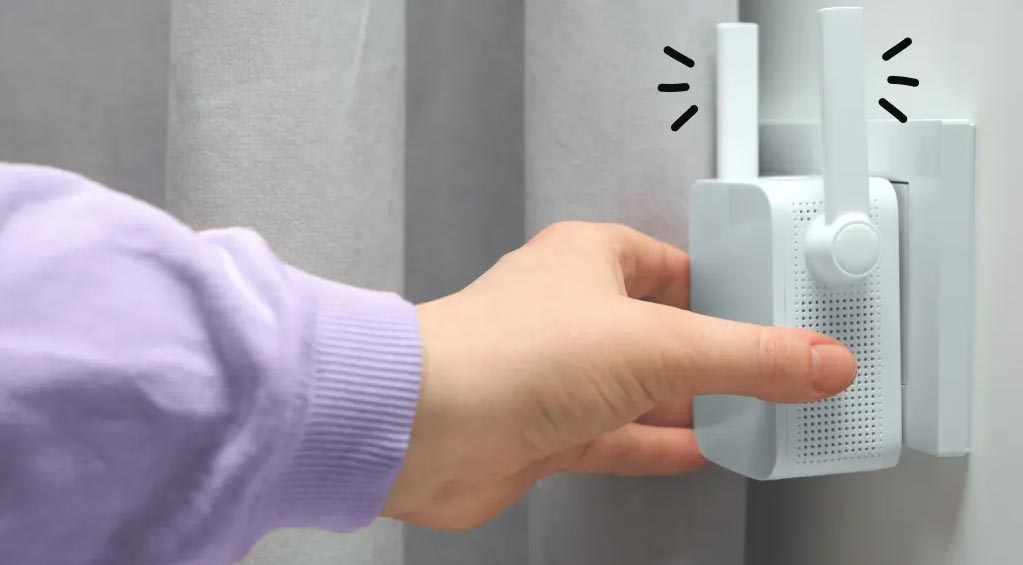Maximize Your Internet Coverage: How WiFi Extenders Eliminate Dead Zones
In today’s connected world, WiFi coverage is essential for both work and entertainment. However, many homes and offices suffer from WiFi dead zones, areas where the internet signal is weak or nonexistent.

How WiFi Extenders Work
WiFi extenders, also known as repeaters or boosters, act as a bridge between your router and the devices in your home or office. They receive the signal from your router and amplify it, allowing the signal to reach areas where it previously couldn’t. These devices are especially helpful in large homes or buildings with thick walls that block WiFi signals. Here’s how WiFi extenders eliminate dead zones:
- Amplify the signal: By picking up your router’s existing signal, the extender broadcasts a stronger version to reach distant areas.
- Eliminate barriers: Thick walls, floors, or appliances that block WiFi signals can be bypassed with an extender placed in the optimal location.
- Expand coverage: WiFi extenders effectively expand the range of your network, covering multiple floors or distant rooms.
- Boost speed: In areas with poor signal, devices may experience slow speeds. An extender helps stabilize and increase the speed of your connection in these areas.
Why Do Dead Zones Exist?
WiFi dead zones are common in many homes and offices. They occur due to various factors, including:
- Physical obstructions: Walls, floors, and furniture can block or weaken WiFi signals.
- Distance from the router: The further you are from the router, the weaker the signal.
- Interference from other devices: Appliances like microwaves, cordless phones, and even other WiFi networks can interfere with your signal.
- Building materials: Metal, concrete, and brick are notorious for disrupting WiFi signals.
Top Benefits of Using WiFi Extenders
Here’s a summary of why WiFi extenders are an excellent solution for dead zones:
- Cost-effective: Compared to upgrading your entire network, extenders are a budget-friendly option.
- Easy installation: Most extenders are plug-and-play, making them simple to set up without professional help.
- Versatile: They work with most routers and internet service providers.
- Improved coverage: Extenders boost the range of your existing WiFi, eliminating gaps in coverage.
Top-Rated WiFi Extenders in the US
Here is a table of 10 top-rated WiFi extenders currently available in the US, along with their unique features and pricing:
| WiFi Extender | Price (USD) | Key Features |
|---|---|---|
| Netgear Nighthawk X6 EX7700 | $149.99 | Tri-band, mesh network compatible, seamless roaming |
| TP-Link RE650 | $119.99 | Dual-band, 2600Mbps speed, 4 external antennas, gigabit Ethernet port |
| Linksys RE7000 | $99.99 | Dual-band, MU-MIMO technology, compact design, beamforming technology |
| D-Link DAP-1650 | $89.99 | Dual-band, 4 gigabit Ethernet ports, backward compatibility |
| Google Nest WiFi | $149.00 | Smart home integration, mesh system, automatic updates |
| Netgear EX3700 | $49.99 | Budget-friendly, dual-band, compact design |
| TP-Link RE220 | $29.99 | Affordable, dual-band, covers up to 1200 sq ft |
| Asus RP-AC1900 | $99.99 | AiMesh compatible, dual-band, easy setup |
| AmpliFi HD WiFi Extender | $129.99 | Mesh technology, high-speed coverage, sleek design |
| Rock Space AC1200 | $45.99 | Dual-band, wide compatibility, easy setup |
These WiFi extenders vary in price and features but all offer excellent coverage to eliminate dead zones and enhance your internet experience.
Q&A
Q: How far can a WiFi extender reach?
A: The range of a WiFi extender depends on the model and the environment. On average, most extenders can cover an additional 1,000 to 3,000 square feet, but larger homes may require multiple extenders for complete coverage.
Q: Can a WiFi extender improve internet speed?
A: While extenders don’t increase the overall speed provided by your internet service, they can help devices receive a stronger, more stable connection, especially in areas where the signal was previously weak or inconsistent.
Q: Is there a difference between a WiFi extender and a WiFi mesh system?
A: Yes, a WiFi extender boosts the signal from your existing router, whereas a mesh system uses multiple nodes placed around your home to create a seamless network with no drop-offs.
Real-World Example
Let’s take the example of Netgear Nighthawk X6 EX7700, which has received widespread acclaim for its tri-band technology and ability to create a seamless mesh network. Users have reported eliminating dead zones in large homes with thick walls. One customer review mentions how they struggled with signal drops in their home office, but after installing the Nighthawk X6, they could enjoy uninterrupted video calls and faster downloads.
In contrast, TP-Link RE650 is known for its exceptional range and speed. It covers up to 14,000 square feet and handles multiple devices without lag, making it an excellent choice for homes with high internet demands or larger layouts. For those looking for a budget-friendly option, TP-Link RE220 at $29.99 delivers reliable performance for smaller spaces.
Installing Your WiFi Extender
Installation is simple and can usually be done in a few steps:
- Plug the extender into a power outlet in the area where the WiFi signal starts to weaken.
- Connect the extender to your existing WiFi network by following the setup instructions, which often include connecting via a web browser or mobile app.
- Place the extender optimally—some models offer signal strength indicators to help you find the best location.
- Test the new network coverage by walking around your home or office to ensure all areas receive a strong signal.
Conclusion
WiFi extenders are an easy and cost-effective way to eliminate dead zones in your home or office, providing a more seamless and reliable internet experience. With options ranging from budget-friendly models to advanced mesh systems, there’s a solution for every need and budget.
Sources:







Recent Comments